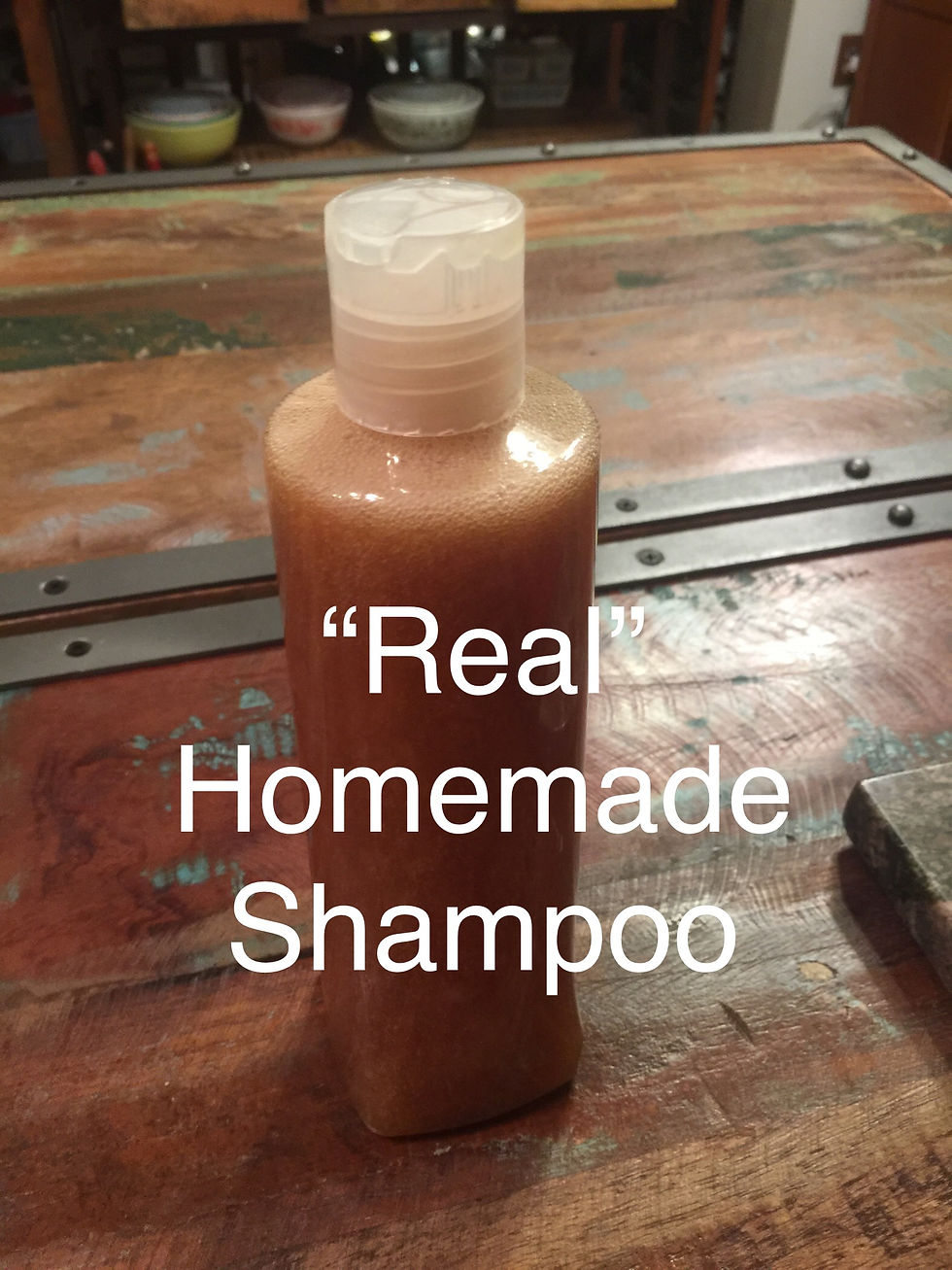
Making your own shampoo is very intimidating. Four years ago I was on a quest to make my own, but after tons of research I chickened out and I ended up buying a shampoo base. I wasn’t happy with it and gave up... for a while. A year later I started researching again. Unfortunately when you google homemade shampoo you get some pretty yucky recipes. First is the "no poo" method with baking soda and a vinegar rinse. While vinegar is fine, the baking soda (even though a natural product) is a very bad idea. Baking soda is highly alkaline and not healthy for the scalp or hair. Some people like it decently at first but then most find after time that their scalp itches and the hair is dry and damaged. Alkaline pH increases the negative electrical charge of the hair fiber and increases friction between the fibers. This will eventually lead to cuticle damage and hair breakage. It is not a myth that lower pH of shampoos cause less frizzing for generating less negative static electricity on the hair surface. The other recipes I see uses soap, usually Castile soap, mixed with a couple of things. The soap leaves an alkaline residue that is very harmful to the hair and skin and accumulates in the hair strands, leaving them opaque and tangled. Soap has a pH of a 9 - 10 which is why a lot a people don’t like soap on their bodies and opt for a body wash instead. Soap should never be used on the scalp or face as it kicks the skin pH out of balance and is super drying. I have tried using soap as shampoo and it always feels as though it won’t rinse out all the way. I have also seen recipes that involve coconut cream or coconut milk mixed with oil and essential oils and different things and frozen in ice cube trays. Having to remember to go to the freezer before each shower is enough to nix this idea. I will admit I have never tried this but to be honest I really don’t want to. To make a real shampoo you have to understand the parts of shampoo that makes it work. Water - Shampoo is 60 to 70 percent water. Without the water you would just have a big sticky ball of goo. Deionized water is the water needed for shelf stable hair care products. Hydrosol waters are also a great choice since they are shelf stable but are very expensive. I use aloe vera instead. It is cheaper and easier to find. It also has health benefits that the water doesn’t. Humectant - Ingredients like glycerin, hyaluronic acid, panthenol and honey are great humectants for shampoo. Humectants moisturize dry and damaged hair. I do not use hyaluronic acid only because of price. It’s a great product but pricey. Botanicals - Botanicals are nourishing, soothing, cleansing, deodorizing, normalizing, refreshing and stimulating. It doesn’t get much better than that. I got mine at the health food store (Vitamin Cottage). They sell them in bags. They are not too expensive and are organic. Emulsifier - Emulsifiers are stabilizers for the shampoo that also seals the hair shaft to make it nice, smooth and soft feeling. Most shampoos on the market use silicones to give the smooth soft feeling that most people love in a shampoo. The natural alternatives would be xanthan gum and lecithin. Cetyl alcohol also works if you have a part oil recipe. I have a water base formula so I can’t use it, but it is a great product. Conditioners - These are moisturizers. Examples are panthenol, honey, silk amino acids, keratin, glycerin, guar gum and aloe vera. Emollients - They soften and soothe the skin plus ideally make the hair soft and silky. These include panthenol and lecithin in the natural world. Most shampoos use mineral oil, silicones, vegetable oils or butters. I chose not to use any oils in my formula for a couple of reasons. One being it is a lot easier to make without oils. No heating and no adding at different stages of the cool down process. Oils also decrease the foaming action in your product.
Proteins - Proteins repair the hair shaft and makes it feel soft. While the protein is good, overdoing it could cause the opposite effect so use the suggested use. Proteins include silk amino acids and keratin. There is also wheat protein, oat protein and others. pH adjusters - Citric Acid and Lactic Acid bring the pH down. Lactic Acid has moisturizing properties but it can be corrosive. Citric Acid is an astringent and a toner. It also enhances the performance of the preservatives. The pH in shampoo is very important, not only for the compatibility with your skin, but for product stability and for the preservative system to work properly. Thickeners - Adding thickeners is nice so you don’t waste it when you are using it. There is nothing worse than it all running through your fingers as you try getting it into your hair. Thickeners include cellulose, guar gum and xanthan gum. Cellulose is needed since the gums are not really enough to thicken properly. Preservatives - If you want a shelf stable product a preservative is important. Luckily we have a few options that we didn’t have even a few years ago. Healthy options that work, like silver dehydrogen, radish root ferment and coconut fruit extract. I have the silver dehydrogen but do not use it in this recipe. If you choose to use it, an opaque bottle would be better as it is a light sensitive product.
Silver dehydrogen is sold at Texas Natural supply .com Surfactants - This category is the most controversial and hardest to wade through. Surfactants or detergents have a really bad reputation for a good reason. However I found out not all surfactants are created equal. Understanding different types of detergents:
Anionic Surfactants - Harshest types Example - Sodium Lauryl Sulfate
Anionic Surfactants - Mild types Example - Sodium Lauryl Sulfoacetate
Cationic Surfactants - Used in conditioners
Non Ionic Surfactants - Used to make other surfactants milder. Example - Decyl Glucoside, Yucca
Amphoteric Surfactant - Reduces irritation and boosts foam Example - Coco Betaine
Sodium Lauryl Sulfoacetate is a very mild detergent that is on the Whole Foods approved list of ingredients. The name is so similar to Sodium Lauryl Sulfate that people immediately write it off as bad, but it couldn’t be more different. It is NOT a sulfate. It is completely safe and great for people with sensitive skin. It removes oils and bacteria without irritation. It is a natural cleanser that is derived from coconut and palm oil. It is actually beneficial for all hair types and is skin friendly. Can be used in bubble baths, bath bombs and shampoos. Bonus!! It produces lathery, foamy products. Now for what you need: The recipe is in grams because most of the ingredient amounts are very small and don’t work with ounces. You will need a digital scale that measures grams. You might already have one if you have a kitchen scale for food portions. Thrift stores or garage sales are a good place to find one if you are on a budget. I found mine at Walmart on clearance for $9.00 Look for food scales in the kitchen area. I bought a stick blender but found I don’t really like it or use it. I just use a whisk and a large glass Pyrex bowl. You will need a funnel to fill your shampoo bottles. I bought my shampoo bottles online. Look for clearance bottles. (I found mine for $6.00 for 48 bottles) Pint size (16 oz) is the best. 16 oz is the recipe I use. I just double or triple the recipe if needed. I do reuse my bottles but you will want to get a lot especially if you are sharing your creation with friends and family. Wholesale supplies plus.com sells
bottles 48 for $17.00 caps 48 for $6.00 They have free shipping over $25.00 The only other item I would say is necessary is a pH tester. I got mine on eBay for 15.00 with free shipping. I test the batch before I add the citric acid and again after. I like the pH below a five but not below a four. It is better to be too low then too high. If you use my recipe exactly you will have a pH of around a 4 to a 4.5 If you make any changes you will have no idea the pH numbers because any little change can make a big difference. One time I made 3 batches in a row and they all turned out different. Now I make all three at the same time. If you make changes to my recipe do them slowly and make notes of every batch. You will want to know what you did each time so you can recreate what you did. I have a notebook in my box of raw materials to take notes. I call it my shampoo journal. When you do research you can write down anything you learn and record your recipe journey.

My Ingredients:
Aloe vera juice - I use George’s aloe because it is distilled and shelf stable. I have not found any other brand that does not need refrigeration.
Amazon sells it as well as health food stores.
Lecithin - This keeps the shampoo stable and so it does not separate. It is said to tone and smooth your skin. It is a sticky gooey syrup that is my least favorite to mix in. I have found that if I add it to the aloe but don’t mix it in until after you add the powders it will mix better without sticking too badly to the whisk. The powdered lecithin is much easier although it is also sticky.
Leucidal Complete - This is a mixture of radish root ferment and coconut fruit extract.
The radish root is antimicrobial and kills bacteria.
Coconut fruit extract kills fungus, yeast and molds.
The mixture is a powerful defense to anything yucky growing in your product.
The cheapest I have found is at Organic Creations. You can buy it already mixed or each separately.
Leucidal is the radish root.
Amticide Coconut is the coconut fruit and
Leucidal Complete is the mixture.
Glycerin - I use Essential Depot or Afriland brand from amazon. They are both a non-gmo formula. I have amazon prime so it is free shipping for me.
I’m sure you can find some at the health food store also.
Glycerin is how to get your botanicals into your recipe. I personally think it makes a big difference on the final product.
I use a mason jar and add 2 cups of glycerin and a couple of large pinches of each dried herb that I want to use. About a 1/4th of a cup of herbs total.
Put a lid on it and solar infuse in a window sil for a week or two. The glycerin will turn a light green or amber color.
You will need to strain and then use as needed.
Do not try to infuse the herbs in water or the aloe. It will rot. Also do not use fresh herbs, they need to be dry.
Botanicals - These are the herbs that make the shampoo extra special. These are optional but I have done both and I think the herbs are definitely worth doing. I use peppermint, oat straw, nettle, chamomile, calendula, thyme, rosemary, and horsetail. Gotu kola and marshmallow are also great choices.
I was a little worried at first it might make the shampoo have a strong herbal smell but it is super mild and you can not smell them in the shampoo.
Sodium Lauryl Sulfoacetate - I get this from amazon. I buy “Pure Organic Ingredients” brand since it is organic and not bad priced. The 2 pound bag is by far the best deal. Hold your breath when you pour it into the bowl and when you first start mixing it in. It is in a powder form and you do not want a powdered foaming agent in your lungs.
Decyl Glucoside - This is a secondary surfactant that makes the primary surfactant milder. This is used in a lot of natural baby care products because it is super gentle and foams well. I bought mine at Organic Creations since theirs is non-gmo and organic. The prices they have are cheaper than most with high quality products.
Yucca - This is what makes this formula an ugly brown color, but it is so worth it.
Yucca does so much for your hair and scalp. It helps with dandruff, thinning hair, and cleaning the hair follicles. It is also a secondary surfactant that makes the primary one milder.
This is the magical ingredient that makes this shampoo so special.
I bought mine at T and J Enterprises.com
They sell organic yucca and it is food grade. I bought the one with 0.1% sodium benzoate since I am looking for it to last and be shelf stable as long as possible. You can buy it without the preservatives if you want.
Silk and Keratin - Organic Creations is my go to for as many of the products as possible. If they have it, it will be the cheapest. You really don’t need to do both but I have. When I ran out of silk I only used keratin and it was fine. You could also use a different one each time.
Silk with regular use repairs damaged hair.
Most silk on the market is chemically treated to take out the brown color and also has added parabens. This one does not.
Keratin can have an off smell to it, but you can not smell it in the final product.
Organic Creations keratin is gmo free and plant based. (It does contain wheat protein, so keep that in mind for allergies)
Keratin will moisturize and condition both skin and hair. It has the ability to strengthen and enhance the elasticity of individual hair strands, and reduces the "fly away" hair syndrome. Keratin protein holds antioxidant benefits that have been noticeable even at low doses such as 0.1%.
Proteins are to be used at a very specific amount. If you use too much it can actually be worse than if you didn’t use any at all. Never use more than the suggested amount. If you use more than one protein do not go over 3% combined.
Honey - I use a powder form that gives the conditioning benefits and is shelf stable.
It is also a humectant. I got mine at Texas natural supply.com
Honey attracts the dirt from skin pores and dead skin cells from the surface of the skin functioning as a natural skin cleanser and softener.
Organic Creations has honey extract that is liquid. I haven’t used it but I’m sure it would work fine.
Panthenol - This is a lubricant and humectant.
It is technically a pro vitamin of B5 that coats and seals the hair shaft giving it a smooth and shiny surface.
It also soothes the scalp by reducing itching and inflammation.
It comes in a powdered form that tends to be clumpy. Just smash the clumps and add.
Xanthan Gum - This is a great thickening agent that also is a foam booster and a suspending agent.
It gives a nice slick feeling to the hair shaft without the use of silicones.
Guar Gum - This is also a great natural thickener. It is great for the hair and soothing to the scalp.
Cellulose - I got mine from Texas Natural Supply. It is organic, non-gmo, naturally sourced and is not synthetic.
Citric Acid - Organic Creations sells a non-gmo one. It is cheap and you don't need a lot.
It is an astringent and skin toner. It also enhances the preservatives.
A one pound bag costs $3.65 and will make 113 pints.
Scent - I chose not to put any essential oils in my formula. I use vanilla powder from Organic Creations.com
I noticed it is on clearance so you may not find it easily. Texas Natural Supply also sells it but at a much higher price.
The shampoo has a nice pleasant smell on its own but the vanilla gives it a touch of something extra.
Plus I'm a vanilla girl. It is a food grade powder that smells really nice. If you are really into scents then add scent but I will say essential oils and scent oils do leave a bit of residue in the hair. You may not care for the way your hair turns out as well with a scent.
My suggestion is to try it first without scent and then with a scent and see what you like better.
Also some people think that the essential oils will be good for their hair but as great as they are your hair will benefit more from the infused herbs.
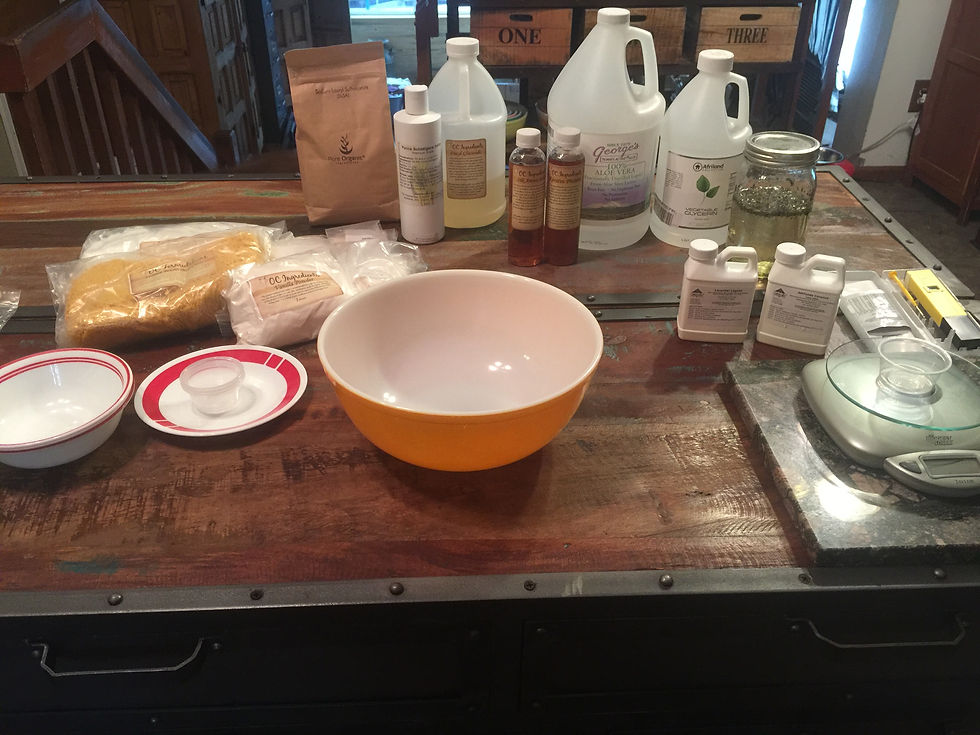
Mixing ingredients:
Aloe Vera - 285 grams (63%)
I start with the aloe vera. I use only the 285 grams that is for one batch no matter how many I am making at a time. If you are making 3 batches and add all the aloe it would be so much fluid that it would be hard to mix in the other ingredients. I add the rest at the end.
Leucidal Complete - 9 grams (2%)
This is a mixture of both the radish root ferment and coconut fruit extract. This is to be added at 2 to 4%.
I have been using at 2% and haven’t had any issues of my formula going bad.
So add the mixture at 2% or if you buy them separate do 1% of each.
Lecithin - 9 grams (2%)
Next I add the lecithin. The Liquid is super sticky so I use a disposable shot glass size cup to measure it in. Organic Creations sells a powder form that is a lot easier to use. I have used both and I suggest the powder.
Keratin and Silk - 5 grams (1%)
Next I add the proteins. These are to be added at up to 3%. I use 1% total. The proteins are not cheap and you don’t need a lot to make a big difference. If using both then do .5% of each doing 5 grams total protein.
Glycerin - 23 grams (5%)
Next are the powders. I have a small plate or bowl and measure out each powder and pour on plate. Then I sprinkle all the powder on top. Whisk well.
It will be a bit lumpy. Do not worry too much. Whisking will get most mixed in and the rest will mix on their own over the next few days.
Panthenol is to be used at 2 to 4%
I use 8 grams (2%)
Guar gum is to be used at up to .5%
I use 2 grams (.45%)
Xanthan gum is to be used at up to 1%
I use 2 grams (.45%)
Honey can de used up to 4%
I use 3 grams (.67%)
Vanilla I use 5 grams at (1.12%)
Cellulose I use 3 grams (.67%)
Mix well at this point. Over mixing once the foaming agents are added makes it foamy.

Sodium Lauryl Sulfoacetate - 20 grams (4.48%)
Decyl Glucoside - 58 grams (13%)
Yucca - 15 grams (3.36%)
I add these last so that they are not whisked to the point of being foamy.
If you are making more than one batch add the rest of the aloe at this point.
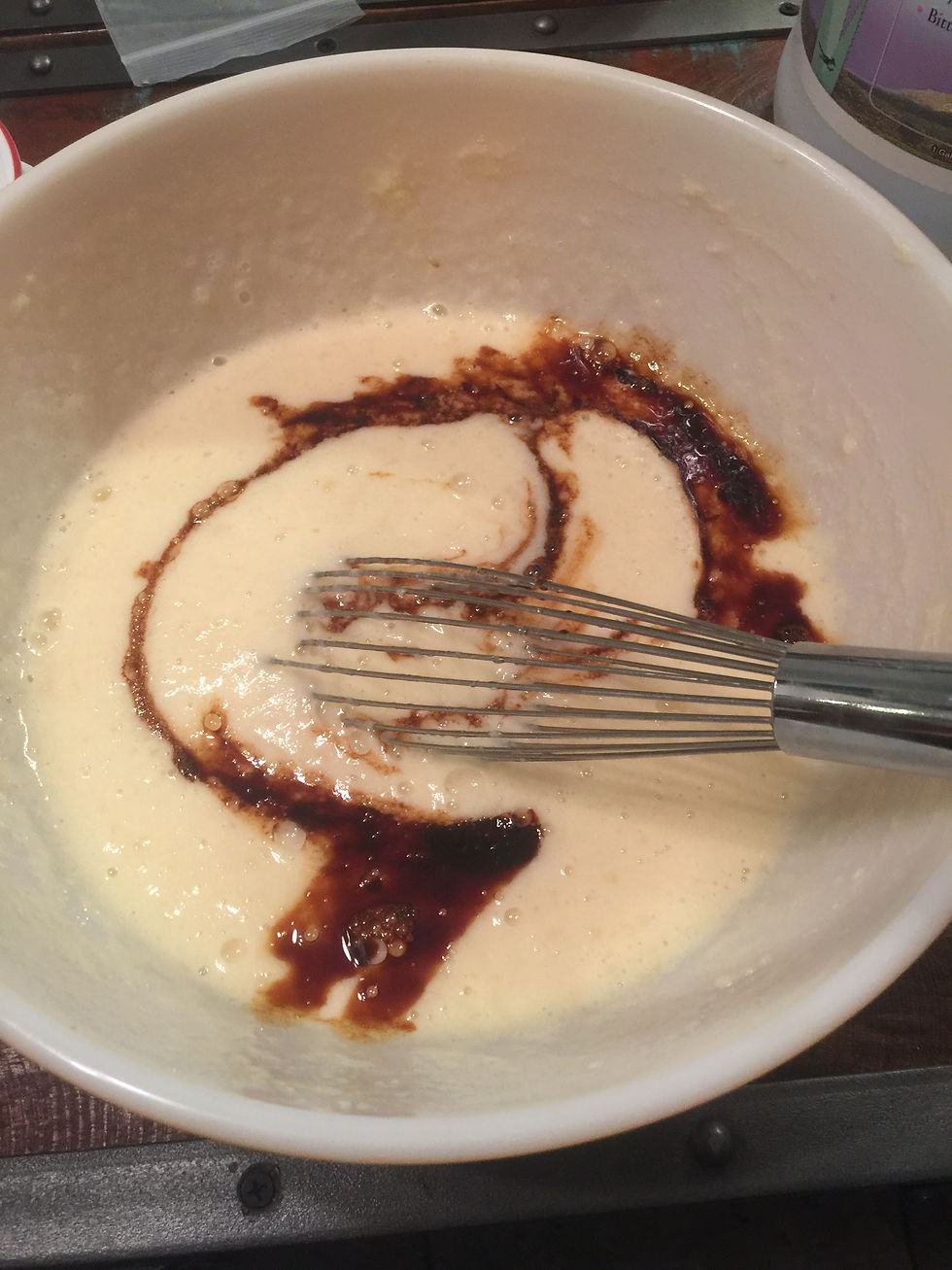
Now I check the pH and see where I am at.
I then add citric acid and check again.
Citric Acid - 4 grams (.89%)
As long as you are under a 5 you will be fine but shoot for above a 4.
It will be a bit foamy and not truly mixed for a couple of days. The more foamy it is the longer it takes to be ready.
My first batch with a stick blender was so foamy it never did settle into shampoo. If you do use a stick blender only do so before the foaming agents are added. Then only whisk once they are added to the mixture.
After a couple of days it will look like shampoo and the lumps will be gone.
I have been using this formula for over a year and I am still very happy with it.
Always wash twice. The first application binds to the oil and dirt on the scalp and hair and will not be overly sudsy. The second application will be nice and foamy and finish cleansing.
If you feel it cleans too good, drop the amount of detergent. If it is not cleansing well enough, up the detergent. You won’t want to change the numbers too much. A few grams make a big difference.
I like to use a cream rinse on the ends of my hair to keep them nice and soft since I use a hot air brush daily. I am working on the cream rinse recipe but it is not ready yet.
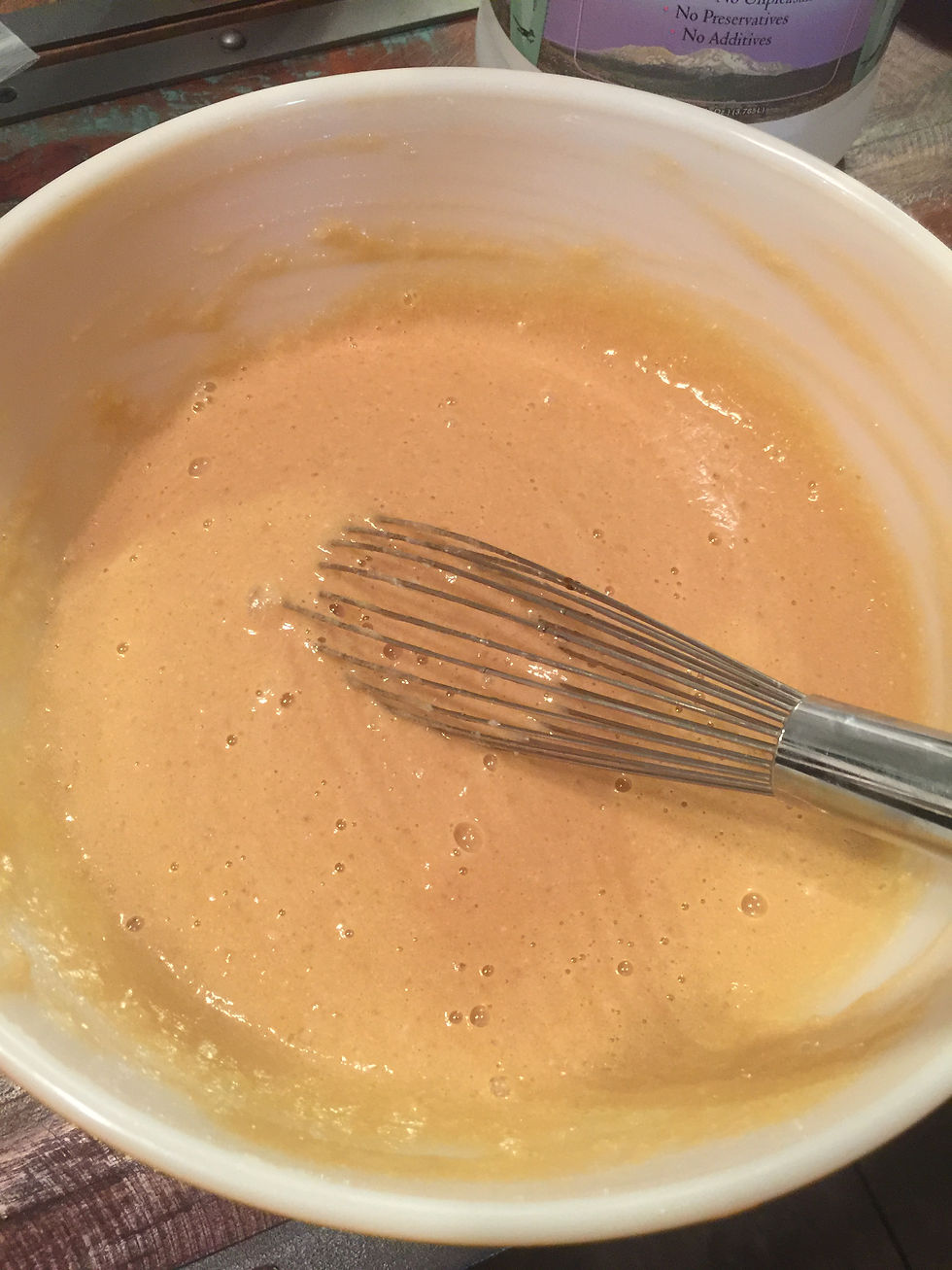
Recipe Cards:
If you go to wholesale supply plus.com go to the tab on top that says “Handmade 101”
Then on the left side under calculators click on “Volume to percentage calculator”
This is a recipe card that figures out the amounts and percentages for you. Make sure you check the bubble for the grams measurement.
1 pint equals 454 grams. So this is your target number. My recipe comes to 451 grams.
Just input your ingredients and amounts and it will give you your percentages.
I print out a new card for each recipe that I try on card stock so that I have them permanently. Give them different names such as numbers. You will eventually decide on the perfect numbers for you and your family.
I suggest that if you make a double or triple batch, to go ahead and print out a recipe card for it so you don’t mess up and forget to double or triple an ingredient.
Cost:
I figure I am spending around 7.00 a pint. (16oz)
If you are used to buying dollar store shampoo then this will seem very expensive.
If you are used to health food store prices then this should be a quite a bit cheaper especially if you compare ounces. Sixteen ounces is a nice sized bottle. Most are 8 to 12oz bottles.
If you are trying to buy the best for your health then you may be spending more like $30.00 a bottle. (Like 100% Pure, it is $26.00 to $33.00 for 13oz)
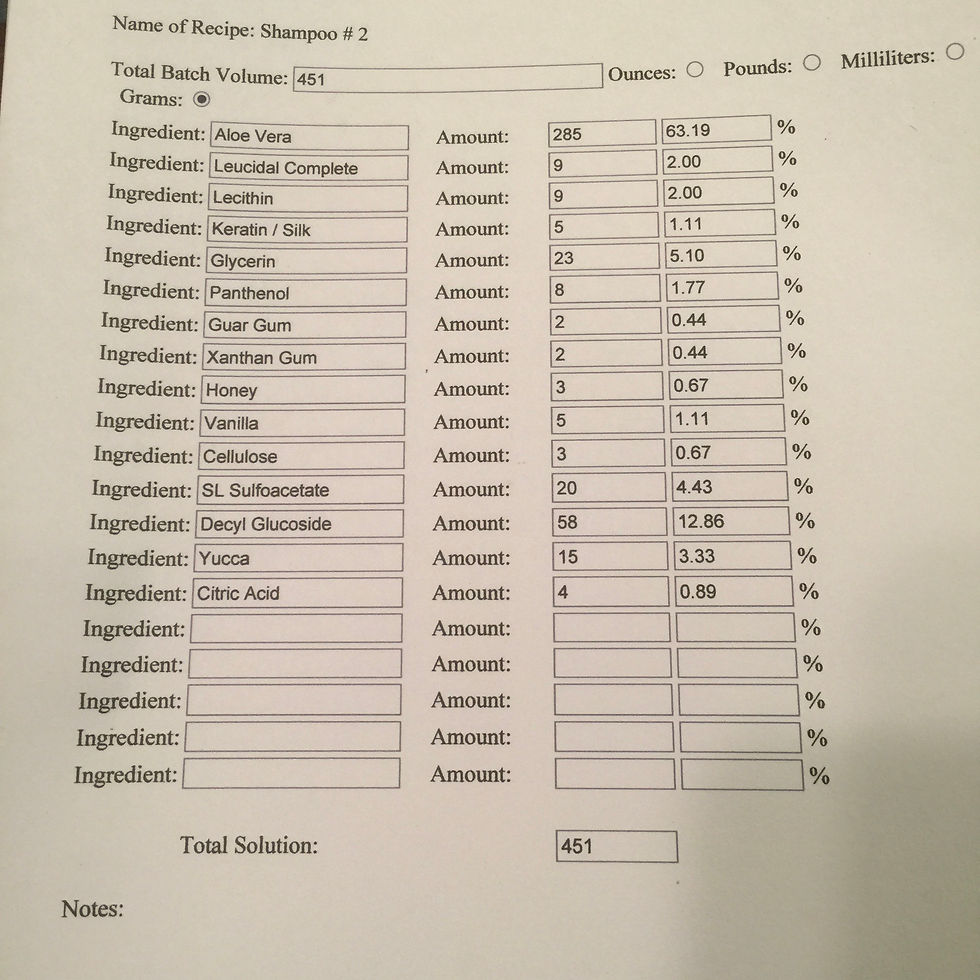
It is a great product health wise but hard on the pocketbook.
The hardest part will be getting the initial ingredients, as it will be a bit of an investment to start up. If you are buying in steps, get the glycerin and herbs first so you can do the infusion while you work on getting the rest.
The good news is you will be able to make a lot of bottles with the initial purchase. One gallon of aloe will make 13 pints of product. One half gallon of Decyl Glucoside will make 30 pints of product. Then buying as you need when you run low won’t be so bad since you will only need a few things at a time.
Cutting corners on the raw ingredients will save a few cents on each bottle but you might not be as happy with the final product if you do.
Good luck my friends!
Dana



